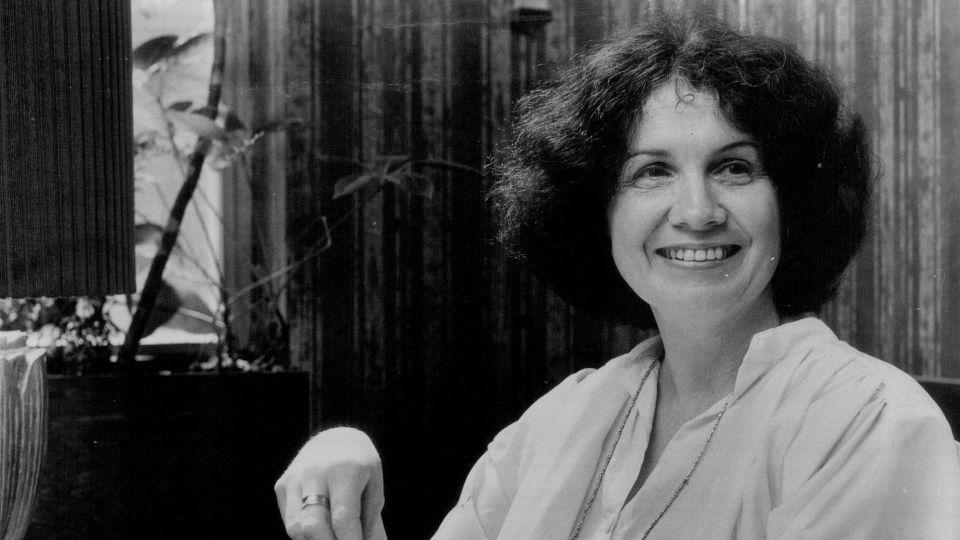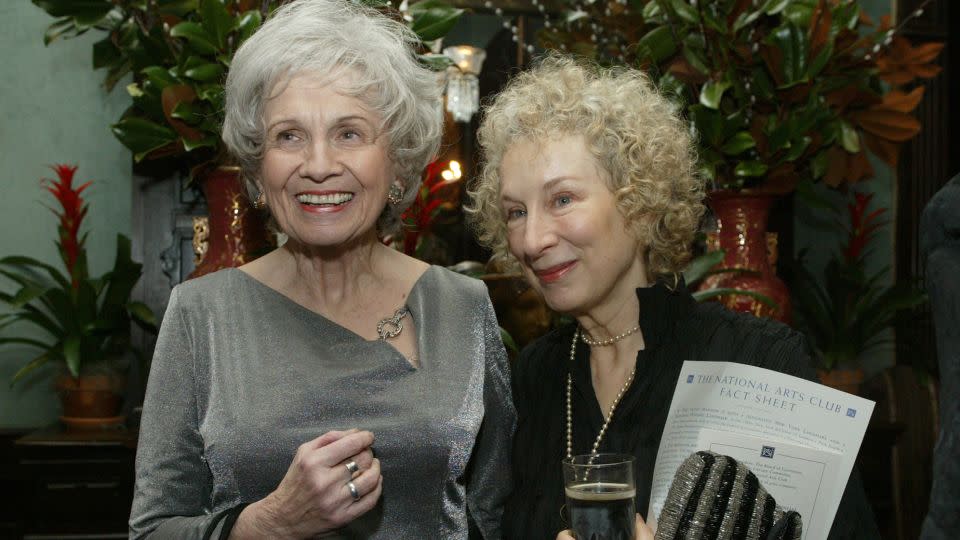Alice Munro, Nobel Prize winner and ‘master of the short story,’ dies at 92
- Oops!Something went wrong.Please try again later.
Alice Munro, the Nobel Literature Prize winner best known for her mastery of short stories and depictions of womanhood in rural settings, has died in Ontario, Canada, at the age of 92. The news was confirmed to CNN “with great sadness” by a spokesperson at her publisher, Penguin Random House.
Born in 1931 in Wingham, Ontario, Munro grew up on what she described as the “collapsing enterprise of a fox and mink farm, just beyond the most disreputable part of town” in a 1994 interview with “The Paris Review.” Amid familial struggles, Munro found an escape in reading as a child. Her early enthusiasm for renowned writers such as Emily Brontë, Charles Dickens, and Lucy Maud Montgomery, among others, reflected an appreciation for literature beyond her age.
“Books seem to me to be magic, and I wanted to be part of the magic.” she told The Guardian of her childhood reading habits. “Books were so important to me. They were far more important than life.”

As the valedictorian of her high school’s graduating class of 1949, Munro received a two-year scholarship to attend the University of Western Ontario, where she majored in journalism before switching to English.
Despite the scholarship initially being a lifeline for Munro, perpetual financial struggles forced her to work as a tobacco picker, a library clerk and even to sell her own blood while studying. After the conclusion of her scholarship, and before her graduation, she married fellow student James Munro and moved with him to Vancouver, where the couple had three children in relatively quick succession (their middle child, Catherine, died shortly after her birth due to kidney complications), and then to Victoria in 1963, where they opened a bookstore.
There, Munro wholly immersed herself in literature, namely writers such as Eudora Welty, Flannery O’Connor, and Carson McCullers, whose work Munro told “The Paris Review” validated her desire to write about rural people in small towns. In addition, she was able to overcome a crippling writer’s block that had plagued her in her twenties — and had resulted in more abandoned work than finished writing.
But it was maternity that led to Munro’s mastery of short stories, not only because familial relationships and domestic lives served as a focal point in many of her works, but also because in her attempt to reconcile her maternal responsibilities with her desire to write, Munro could only set aside short periods of time during her day to craft stories, to the point where she would jot down ideas and drafts during her children’s naps.
Munro’s mainstream breakthrough came in 1968 with the publication of her debut short story collection, “Dance of the Happy Shades.” A collection of 15 of her earliest stories, the book received critical acclaim and won Canada’s prestigious Governor General’s Award for Fiction in the same year.
It largely sets the tone for Munro’s prose; semi-autobiographical in nature and exploring the universality of the human urge for self-discovery, love, and independence, through the mundanity of everyday life in small, rural communities.
“What you’re getting in a small town is social attitude sort of distilled so you could look at them,” Munro told Canadian broadcaster CBC in 1990. “The small town is like a stage for human lives.”
Throughout her writing career, Munro published 14 short story collections, and was a regular contributor in literary magazines such as “The New Yorker” and “Tamarack Review.” In several of her later collections, such as “The Moons of Jupiter” and “The Progress of Love,” Munro experimented with the traditional architecture of short stories and incorporated nonlinear narrative structures. She was also known for constantly editing and revising her stories, even after publication.

Several of her short stories were adapted to film, including the 1983 Oscar-winning short “Boys and Girls” and the 2006 Oscar-nominated film “Away from Her.”
In 2009, Munro revealed she had been treated for cancer and had undergone coronary bypass surgery. Three years later, she published her final collection of short stories, “Dear Life,” which, although a drearier portrayal of small-town lives, served as a literary closure to her semi-autobiographical depictions of womanhood in rural towns.
Munro’s mastery of short stories and literature has been lauded by many of her contemporaries. Literary critic James Wood hailed Munro as “our Chekhov,” drawing similarities to the renowned Russian short story writer, while her compatriot and fellow writer Margaret Atwood elevated her to “international literary sainthood.”
In 2013, Munro was selected as Nobel Laureate in Literature for her body of work spanning seven decades. The Nobel Committee described Munro as a “master of the contemporary short story,” whose writing captured “the feeling of just being a human being.”
“I want my stories to move people,” Munro said in her Nobel Lecture in absentia, “everything the story tells moves the (reader) in such a way that you feel you are a different person when you finish.”
For more CNN news and newsletters create an account at CNN.com

